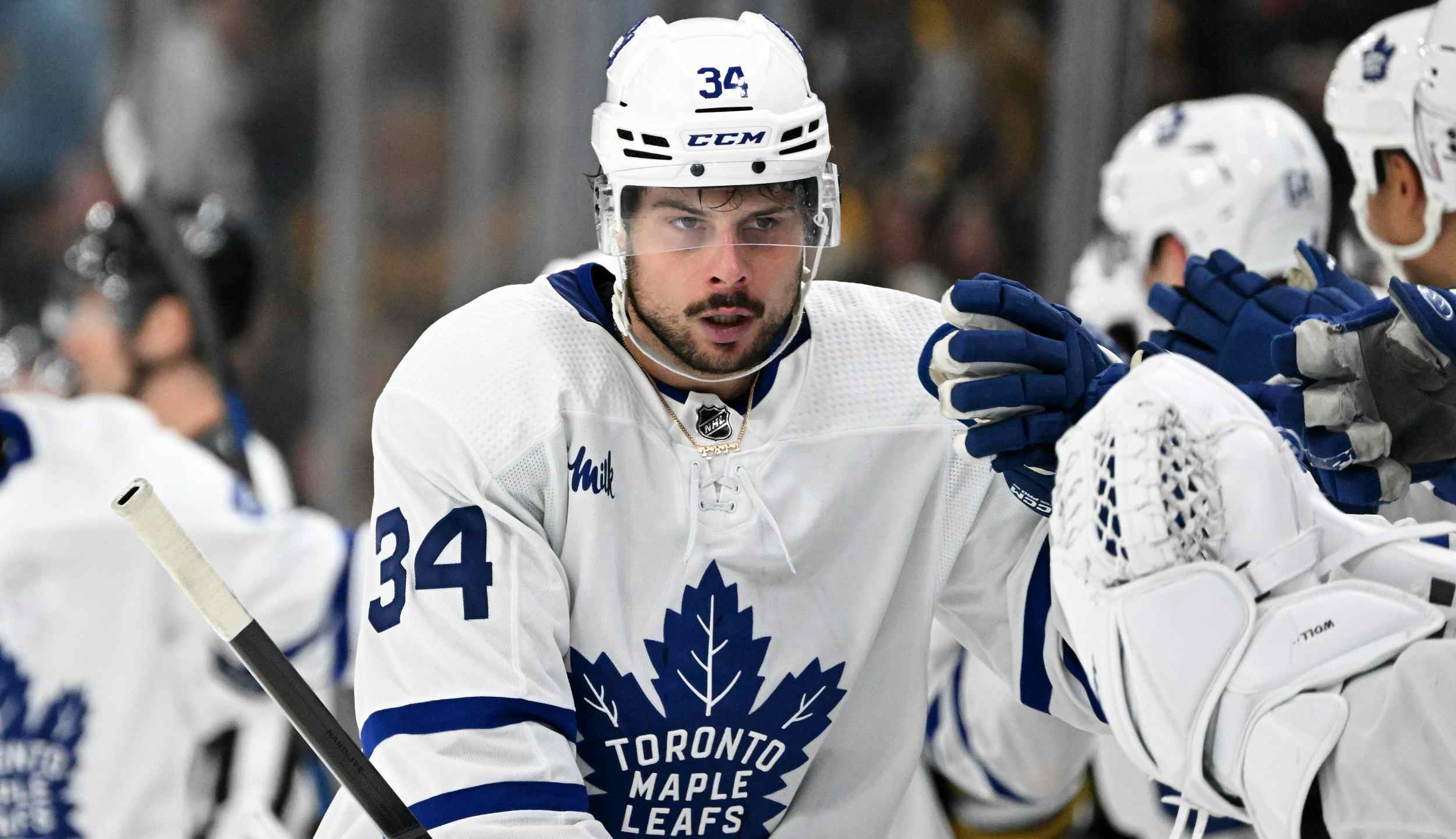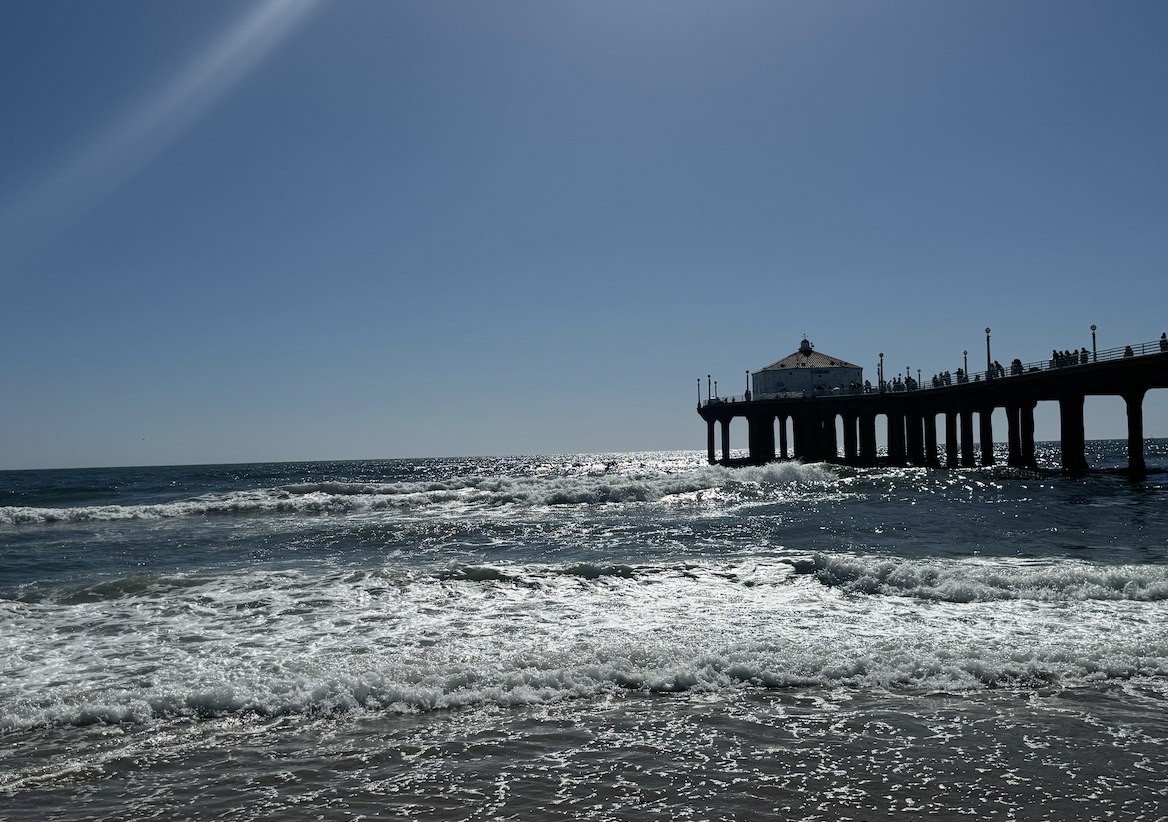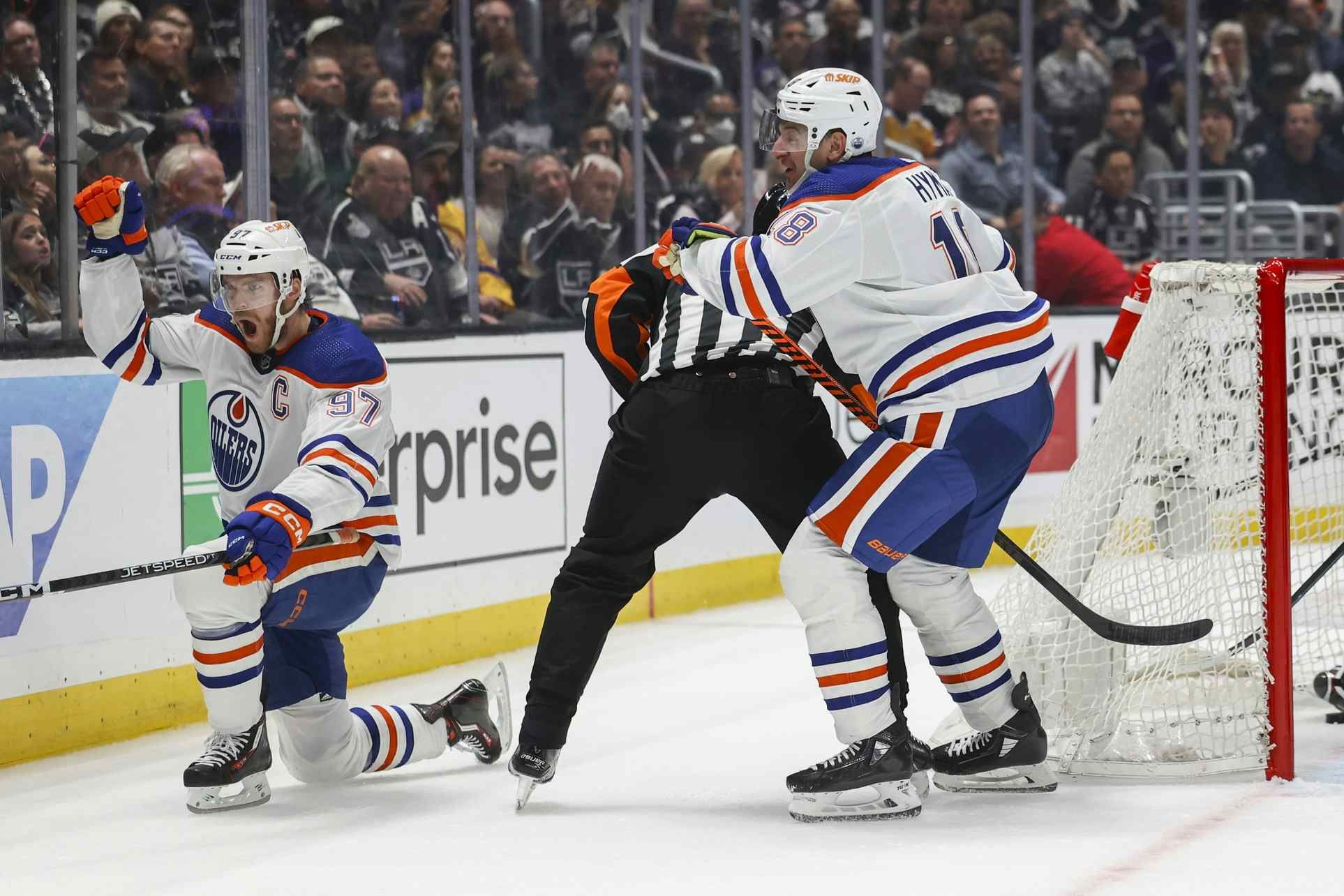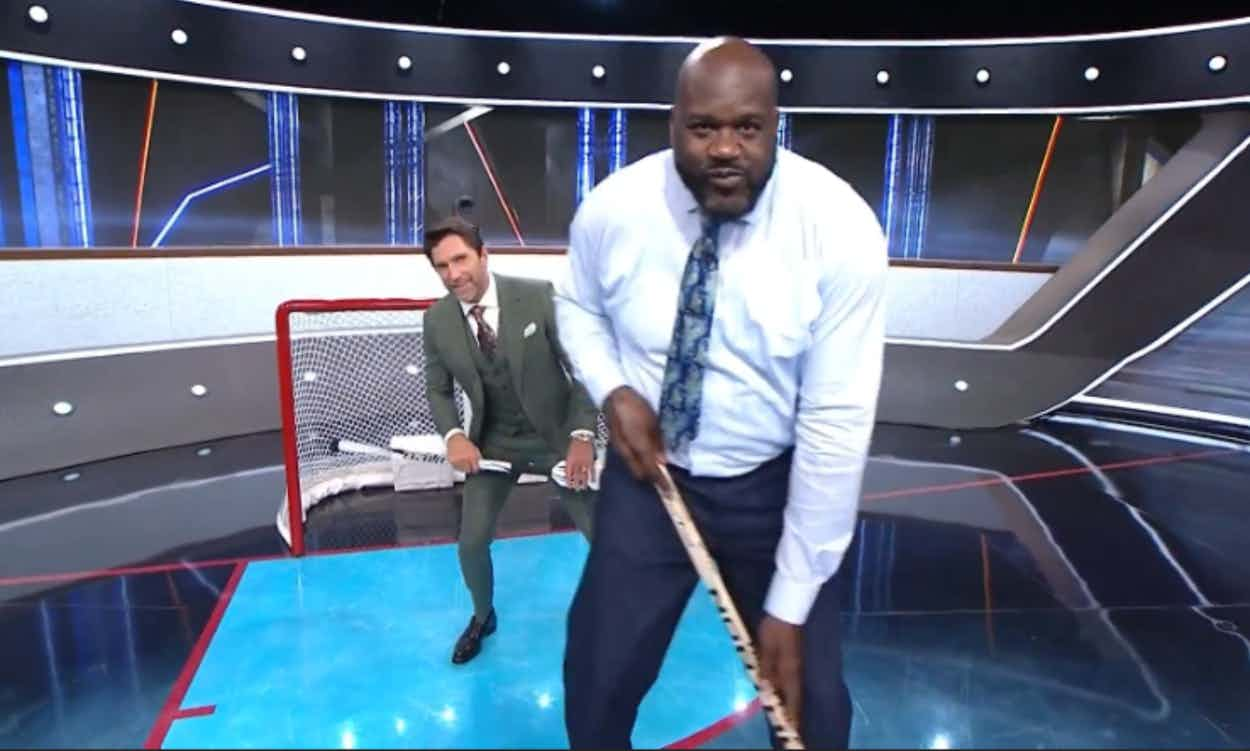These Oilers, Those Blackhawks

By Cam Lewis
6 years agoI wrote last week about the Edmonton Oilers and the Pittsburgh Penguins from a decade ago because of the obvious similarities between Connor McDavid and a young Sidney Crosby. Through two seasons with McDavid in the fold, the Oilers have been shockingly similar to those Penguins teams from Crosby’s rookie and sophomore years.
Obviously it’s a big deal to be compared to the Penguins, who have been one of the league’s most successful teams over the past decade, but if we’re going to label one team the dynasty of the salary cap era, it’s the Chicago Blackhawks. Since breaking out in 2008-09, the Hawks have won the Stanley Cup three times, made the playoffs nine times in a row, and have finished with 100 points in the regular season seven times, eight if you consider the pace they were on during the lockout-shorted 2013 season.
The Hawks are also a fascinating case study because they’ve been buried in salary cap hell for years, yet they continue to have success. Over the years, the Hawks have seen a wealth of good players come and go, but six have been there through all of it. With Jonathan Toews, Patrick Kane, Duncan Keith, Brent Seabrook, Nicklas Hjalmarsson, and Marian Hossa, the Hawks have seen great success and have wheeled around the cap admirably.
Can the Oilers follow in the Hawks’ footsteps? Because as we know, this team is going to be dealing with its own salary cap struggles very soon.
How did they get there?
Like the Oilers, Chicago had its own Decade of Darkness. After missing the playoffs only once between 1958 and 1997, an incredible span that saw the careers of Bobby Hull, Stan Mikita, Glenn Hall, Tony Esposito, Denis Savard, Jeremy Roenick, and Chris Chelios in Chicago, the Hawks fell into oblivion. Between 1997-98 and 2007-08, the Hawks made the playoffs just once, a first round exit as a middling team in which their leading scorer was Eric Daze.
It didn’t have quite the same massive low as the Oilers Decade of Darkness did, but the Hawks really were the laughing stock of the league over the period of time. Unlike Edmonton and Pittsburgh, though, the Hawks never really got a golden ticket. They didn’t hit the jackpot and choose first overall when a McDavid or Crosby was available, but they did get some lottery luck. This is something Oilers fans will know all too well.
In 2007, after the Oilers dealt Ryan Smyth to the Islanders, they went into a tailspin. The Oilers dropped 18 of their final 20 games, falling from playoff contention into lottery consideration. But on the final day of the season, the Oilers downed the Flames 3-2, resulting in them finishing in a tie with the Hawks for fifth last in the standings. The Oilers had won one more game, so the Hawks got to go into the five-team lottery. Their ball was drawn, and they chose Patrick Kane first overall. The Oilers ended up with Sam Gagner at sixth.
In the years before that, the Hawks had been stockpiling high-level talent in the draft. They picked Jonathan Toews third overall in 2006, Jack Skille seventh in 2005, Cam Barker third in 2004, Brent Seabrook 14th in 2003, and Tuomo Ruutu ninth overall in 2001. Before that, though, the Hawks had also swung and missed on a handful of high picks, playing a big role in their decade of futility. In 2000, they had the 10th and 11th picks, and used them on Mikhail Yakubov and Pavel Vorobiev. Their eighth overall choice in 1998, Mark Bell, had his career derailed due to issues with alcoholism. Despite those botched high picks, the Hawks were stockpiling a lot of talent in the later rounds. We’ll get to that in a bit.
There are quite a few parallels that can be drawn between the Oilers and Hawks here. Both teams were bad for a long, long time, and as a result, had the opportunity to a lot of talent to their system through high draft picks. While the Hawks weren’t ever gifted a generational talent, they really lucked out in 2007 winning the Kane lottery. Also, the Hawks had their fair share of busts and botched high picks, just like the Oilers did.
Failed to load video.
And then what happened?
Things really changed for the Hawks when Toews and Kane came into the picture. Both players broke into the league in 2007-08, helping Chicago to a modest 18-point improvement in the standings. They didn’t make the playoffs, but the Hawks finished ninth in the West, and Kane and Toews were first and third in team scoring as 19-year-olds, suggesting times were changing in Chicago.
Heading into 2008-09, the Hawks made some significant offseason moves. They signed Brian Campbell, who was probably the best free agent on the market at the time, to a massive eight-year, $57.12 million deal, and Cristobal Huet, who was coming off some damn good seasons in Montreal, to a four-year deal. They brought in legendary coach Scott Bowman as a team advisor and former Colorado and Hartford coach Joel Quenneville as a scout.
A few games into the season, Quenneville replaced Denis Savard as coach, and the team went on to finish with 102 points, flying all the way to the Western Conference Final. Martin Havlat finally returning to full health for the first time in years was important to the team’s success, as was 70 and 69 point seasons from Kane and Toews. But one of the biggest factors in Chicago’s improvement? An influx of young talent beyond their two big guns. Kris Versteeg, Dave Bolland, Dustin Byfuglien, Troy Brouwer, Ben Eager, Colin Fraser, James Wisniewski, and Nik Hjalmarsson were all rookies or sophomores who had been drafted and developed by the organization that played roles on that 2008-09 Hawks team. Duncan Keith and Brent Seabrook, who had been around a little longer, also took on bigger roles that season, leading the team in ice time.
In the offseason, Martin Havlat and goaltender Nikolai Khabibulin cashed in on strong seasons, signing big contracts in Minnesota and Edmonton respectively. With the free cap room, the Hawks inked top free agent prize Marian Hossa, who had lost in the Cup Final in back-to-back seasons with Pittsburgh and Detroit, to a ridiculous 12-year contract. So for the second year in a row, the Hawks capitalized on their team being young and cheap and brought in arguably the best two free agents available. They also made a couple of low-key additions, signing veteran John Madden and Stanley Cup winner Tomas Kopecky in free agency.
But this was largely the same high flying, upstart Hawks team that broke out the season before. Kane put up 88 points, a new career high, Toews continued to establish himself as an elite two-way centre, and Keith really emerged as a top-flight defenceman. Beyond them, Patrick Sharp had the best season of his career, Versteeg and Brouwer potted 20 goals, and the team’s ridiculous depth compensated for Campbell and Hossa missing time with injury. Antti Niemi, an undrafted free agent singing back in 2008, stole the net from Huet. The Hawks rolled into the playoffs after having their best season in franchise history, and went on to blow through everyone en route to their first Stanley Cup since 1961.
This team really began the ‘draft and develop’ renaissance in the NHL. While they had made two major free agent signings, the Hawks’ Stanley Cup team in 2010 featured 11 players who had been developed by the team, and only three of them had been in the first round.
On Dec. 1, 2009, the Hawks announced extensions to Toews, Kane, and Keith. Toews and Kane’s deals were identical, worth $6.3 million annually over five years. Keith’s contract was front loaded, worth $5.5 million annually over 13 seasons. After they won the Cup that year, the Hawks had to execute their first cap-induced fire sale. They dealt Byfuglien, Eager, Brent Sopel, Andrew Ladd, Colin Fraser, and Kirs Versteeg to Atlanta, Edmonton, and Toronto in deals for prospects and picks, and had to match an RFA offer sheet on Hjalmarsson from San Jose. They also couldn’t afford to keep Niemi, who ended up signing as a free agent with the Sharks.
Surely you remember what happened the next few years. The Hawks won the Cup again in 2013 with a retooled roster, featuring developed players like Brandon Saad, Andrew Shaw, Marcus Kruger, Nick Leddy, and Corey Crawford. They had another fire sale, lost more players like Sharp and Bolland to the cap, reloaded, and won again in 2015 right before Toews and Kane’s mega $10.5 million annual extensions kicked in.
All in all? The Hawks have been the league’s most successful franchise over the past nine seasons. As a result, there’s been a term known as the Chicago Blackhawks Model named after them, in which teams aim to build a core with high draft choices, continue to augment it by developing talent through their farm system, and then sell auxiliary players off when they become expensive. Rise. Wash. Repeat.
Failed to load video.
What does it all mean?
Like I said earlier, the Hawks are fascinating because while their three championship teams are quite different, six players have remained constant. The Hawks identified Toews, Kane, Hossa, Keith, Seabrook, and Hjalmarsson as their core, and built and sold around them as they saw fit.
The are a few lessons to be learned here.
The first is that you can’t keep everyone around. That’s the reality of the cap world. Byfuglien, Ladd, Bolland, Sharp, Niemi, and so on were all key players, but couldn’t fit under the cap. You have to identify who the real leaders are on the team and lock them down.
The second is the importance of drafting and developing. The Hawks kind of have two phases here. There’s the first phase which is them being bad for a decade and drafting an obscene amount of talent because of it. The second is after they got good, the Hawks continued to hit on players despite never having high picks.
Between 2009 and 2014, the Hawks drafted Marcus Kruger, Joakim Nordstrom, Brandon Saad, Andrew Shaw, Teuvo Teravainen, Vince Hinostroza, Ryan Hartman, and Nick Schmaltz, who have either won a Cup with them or are playing with the team now on the cheap. The Hawks made a couple of huge signings, Hossa and Campbell, but those came in the early stages when the team was cheaper. Otherwise, their free agent additions have been low-key, like Brad Richards, Tomas Kopecky, and Michal Roszival.
The third lesson kind of loops back to the first. You have to be ready to sell on players before you lose them for free in order to keep the wheel rolling. Ruutu got the Hawks Ladd. Cam Barker got them Nick Leddy. Shaw got them top prospect Alex DeBrincat. Saad got them Artem Anisimov. The picks and prospects acquired from the other players sold off by the Hawks over the years haven’t panned out, but it’s given them the opportunity to continue augmenting their roster with cheap talent.
One thing the Oilers haven’t had is the same success in the later round that Chicago had, and continues to have.
Take a look at Chicago’s draft history. Almost every year there’s a mid-round pick or two that hits. During their rebuilding days, they had endless picks out of the first round develop into good players. Keith, Wisniewski, Byfuglien, Crawford, Bolland, Bickell, Brouwer, and Hjalmarsson were all later round picks between only 2002 and 2005.
Then go and look at the Oilers draft history. During their decade of rebuild, they hit on… Jeff Petry and Brandon Davison outside of the first round, and neither is with the team anymore. I guess Anton Lander and Tyler Pitlick are up in the air, and Anton Slepyshev looks like he could be a player too, but the Oilers badly need to draft and develop better than they have in the past in order to have the same future as the Hawks.
Previously in this series: These Oilers, Those Penguins
Recent articles from Cam Lewis





